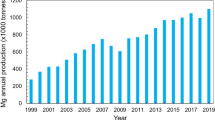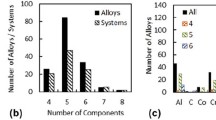Abstract
Adiabatic shear bands (ASBs) are known to be the dominant damage mechanisms in structural materials under high strain rate loading such as magnesium (Mg) alloys. Therefore, to tailor the mechanical performance of Mg alloys for structural applications, there is a need to understand their susceptibility to strain localization and formation of ASBs, including the mechanism of crack initiation and propagation. In this study, as-fabricated (extruded) and heat-treated (annealed at 400 °C) AZ31B Mg alloys were subjected to high strain rate loading using the direct impact Hopkinson pressure bar (DIHPB) under different strain rates (834–2435 s−1) at room temperature. The impact specimens failed through the occurrence of strain localization, formation of diffused ASBs, and initiation/propagation of micro-cracks along the path of evolved ASBs. Thus, strain localization results in crack initiation and propagation despite the inherent brittle nature of the Mg alloys. Furthermore, in regions with evolved shear bands, there was a low occurrence of twin/micro-twins. This observation suggests that shear band formation dominates over the micro-twinning effect in Mg alloys. Also, the presence of fractured second-phase particles dispersed within voids and along shear band path suggests particle fragmentation and refinement due to the strain localization. Second-phase particle fragmentation also played a role in void nucleation, growth, and coalescence during the deformation. In addition, there seems to be a threshold strain rate (~>2225 s−1) beyond which the specimen fractures regardless of the initial microstructure of the Mg alloys.










Similar content being viewed by others
References
M. Pekguleryuz, K. Kainer, and A. A. Kaya, Fundamentals of magnesium alloy metallurgy. 2013.
Khatami R, Fattah-alhosseini A, Mazaheri Y, Keshavarz MK, Haghshenas M (2017) Microstructural evolution and mechanical properties of ultrafine grained AA2024 processed by accumulative roll bonding. Int J Adv Manuf Technol 93:681–668
Chen P, Feng J, Zhou Q, An E, Li J, Yuan Y, Ou S (2016) Investigation on the explosive welding of 1100 aluminum alloy and AZ31 magnesium alloy. J Mater Eng Perform 25(7):2635–2641
Tun KS, Charadva V, Gupta M (2021) Lightweight medium entropy magnesium alloy with exceptional compressive strength and ductility combination. J Mater Eng Perform 30(4):2422–2432
Aghion E, Moscovitch N, Arnon A (2009) Mechanical properties of die-cast magnesium alloy MRI 230d. J Mater Eng Perform 18(7):912–916
Wang HY, Yu ZP, Zhang L, Liu CG, Zha M, Wang C, Jiang QC (2015) Achieving high strength and high ductility in magnesium alloy using hard-plate rolling (HPR) process. Sci Rep 5:17100
Lou C, Sun Q, Yang Q, Ren Y, Gao Z, Zhang X (2018) Microstructure and deformation mechanism of AZ31 magnesium alloy under dynamic strain rate. J Mater Eng Perform 27(11):6189–6195
Boakye Yiadom S, Khaliq Khan A, Bassim N (2014) Effect of microstructure on the nucleation and initiation of adiabatic shear bands (ASBs) during impact. Mater Sci Eng A 615:373–394
Boakye-Yiadom S, Khan AK, Bassim N (2014) A systematic study of grain refinement during impact of 4340 steel. Mater Sci Eng A 605:270–285
Odeshi AG, Al-ameeri S, Mirfakhraei S, Yazdani F, Bassim MN (2006) Deformation and failure mechanism in AISI 4340 steel under ballistic impact. Theor Appl Fract Mech 45(1):18–24
Dudamell NV, Ulacia I, Gálvez F, Yi S, Bohlen J, Letzig D, Hurtado I, Pérez-Pradoa MT (2011) Twinning and grain subdivision during dynamic deformation of a Mg AZ31 sheet alloy at room temperature. Acta Mater 59(18):6949–6962
Dodd B, Bai Y (2012) Adiabatic shear localization: frontiers and advances, 2nd edn. Elsevier
Murr LE, Trillo EA, Pappu S, Kennedy C (2002) Adiabatic shear bands and examples of their role in severe plastic deformation. J Mater Sci 37(16):3337–3360
Landau P, Osovski S, Venkert A, Gärtnerová V, Rittel D (2016) The genesis of adiabatic shear bands. Sci Rep 6:37226
Ahmad IR, Shu DW (2014) Compressive and constitutive analysis of AZ31B magnesium alloy over a wide range of strain rates. Mater Sci Eng A 592:40–49
Li L, Muránsky O, Flores-Johnson EA, Kabra S, Shen L, Proust G (2017) Effects of strain rate on the microstructure evolution and mechanical response of magnesium alloy AZ31. Mater Sci Eng A 684:37–46
Liu X, Mao P, Wu X, Zhou L, Wang Z, Wang F, Liu Z (2023) Microstructure evolution of adiabatic shear band in AZ31 alloy under dynamic compression. Mater Sci Technol 39(7):847–857
Boakye-Yiadom S, Khan AK, Bassim N (2014) Deformation mapping and the role of carbides on the microstructure and properties of evolved adiabatic shear bands, metal. Metall Mater Trans A: Phys 45(12):5379–5396
Tetteh F, Hanson S, Joseph D, Solomon A, Yiadom B (2023) Influence of precipitate distributions on adiabatic shear band formation and flow behavior of heat-treated 7050 aluminum alloy. Int J Adv Manuf Technol 126:5435–5456
Johansson J, Persson C, Testa G, Ruggiero A, Bonora N, Hörnqvist Colliander M (2017) Effect of microstructure on dynamic shear localisation in Alloy 718. Mech Mater 109:88–100
Boakye-Yiadom S, Bassim N (2012) Effect of heat treatment on stability of impact-induced adiabatic shear bands in 4340 steel. Mater Sci Eng A 546:223–232
Yang Y, Jiang L, Xu Z, Wang Z (2017) An examination of adiabatic shearing behavior in ZK60 alloy with different states of heat treatment. Mater Sci Eng A 685:57–64
Li Y, Bushby AJ, Dunstan DJ (2016) The Hall-Petch effect as a manifestation of the general size effect. Proc R Soc A Math Phys Eng Sci 472(2190):20150890
Pande CS, Cooper KP (2009) Nanomechanics of Hall-Petch relationship in nanocrystalline materials. Prog Mater Sci 54(6):689–706
Bonetti E, Pasquini L, Sampaolesi E (1997) The influence of grain size on the mechanical properties of nanocrystalline aluminium. Nanostruct Mater 9(1–8):611–614
Naik SN, Walley SM (2020) The Hall–Petch and inverse Hall–Petch relations and the hardness of nanocrystalline metals. J Mater Sci 55(7):2661–2681
Barnett MR (2007) Twinnig and the ductility of magnesium alloys part II. ‘Contraction’ Twins. Mater Sci Eng A 464:1–7
Mokdad F, Chen DL, Li DY (2018) Twin-twin interactions and contraction twin formation in an extruded magnesium alloy subjected to an alteration of compressive direction. J Alloys Compd 737:549–560
Wang R, Mao P, Liu Y, Chen Y, Wang Z, Wang F, Zhou L, Liu Z (2019) Influence of pre-twinning on high strain rate compressive behavior of AZ31 Mg-alloys. Mater Sci Eng A 742(August 2018):309–317
Wang Y, Xu H, Erdman DL, Starbuck MJ, Simunovic S (2011) Characterization of high-strain rate mechanical behavior of AZ31 magnesium alloy using 3D digital image correlation. Adv Eng Mater 13(10):943–948
Prasad NS, Kumar NN, Narasimhan R, Suwas S (2015) Fracture behavior of magnesium alloys—role of tensile twinning. Acta Mater 94:281–293
Zhen L, Zhou DL, Xu CY, Shao WZ (2010) Microstructure evolution of adiabatic shear bands in AM60B magnesium alloy under ballistic impact. Mater Sci Eng A 527(5):5728–5733
Bilby BA, Cricker AG (1965) The theory of the crystallography of deformation twinning. Math Phys Sci 288(1413):240–255
Serra A, Bacon DJ (2005) Modelling the motion of {11(2) over-bar-2} twinning dislocations in the HCP metals. Mater Sci Eng A 400:496–498
Sarker D, Friedman J, Chen DL (2014) Influence of pre-strain on de-twinning activity in an extruded AM30 magnesium alloy. Mater Sci Eng A 605:73–79
Mokdad F, Chen DL, Li DY (2017) Single and double twin nucleation, growth, and interaction in an extruded magnesium alloy. Mater Des 119:376–396
Sarker D, Friedman J, Chen DL (2015) De-twinning and texture change in an extruded AM30 magnesium alloy during compression along normal direction. J Mater Sci Technol 31(3):264–268
Hong SG, Park SH, Lee CS (2010) Role of {10–12} Twinning characteristics in the deformation behavior of a polycrystalline magnesium alloy. Acta Mater 58(18):5873–5885
Cheng J, Ghosh S (2015) A crystal plasticity FE model for deformation with twin nucleation in magnesium alloys. Int J Plast 67:148–170
Luque MG, Curtin WA (2014) A new mechanism for twin growth in Mg alloys. Acta Mater 81:442–456
Meyers MA, Vöhringer O, Lubarda VA (2001) The onset of twinning in metals: a constitutive description. Acta Mater 49:4025–4039
Chakraborty J, Gosh M, Ranjan R, Das G, Das D, Chandra S (2013) X-ray diffraction and Mössbauer spectroscopy studies of cementite dissolution in cold-drawn pearlitic steel. Philos Mag 93(36):4598–4616
Meyers MA, Wittman CL (1990) Effect of metallurgical parameters on shear band formation in low-carbon (approx. 0.20 wt pct) steels. Metall Trans A, Phys Metall Mater Sci 21 A(12):3153–3164
Traiviratana S, Bringa EM, Benson DJ, Meyers MA (2008) Void growth in metals: atomistic calculations. Acta Mater 56:3874–3886
Lubarda VA, Schneider MS, Kalantar DH, Remington BA, Meyers MA (2004) Void growth by dislocation emission. Acta Mater 52:1397–1408
Ashby MF, Lyman J (1969) On the generation of dislocations at misfitting particles in a ductile matrix. Philos Mag 20(167):1009–1022
Brown LM, Woolhouse GR (1970) The loss of coherency of precipitates and the generation of dislocations. Philos Mag 21(170):329–345
Bassim MN, Odeshi AG (2008) Shear strain localisation and fracture in high strength structural materials. Arch Mater Sci Eng 31(2):69–74
Odeshi AG, Bassim MN, Al-Ameeri S (2006) Effect of heat treatment on adiabatic shear bands in a high-strength low alloy steel. Mater Sci Eng A 419(1):69–75
Bassim N (2011) Proceedings of the 13th International Conference on Mesomechanics, pp 1–3
Boakye-Yiadom S, Bassim N (2018) Microstructural evolution of adiabatic shear bands in pure copper during impact at high strain rates. Mater Sci Eng A 711:182–194
Acknowledgement
The authors thank Falconmet Engineering and Laboratories Inc., ON, Canada, for the technical support they provided.
Funding
The authors received financial support provided by the National Science and Engineering Research Council of Canada (NSERC) towards this research.
Author information
Authors and Affiliations
Contributions
All authors contributed to the study conception and design. Material preparation, data collection, and analysis were performed by Francis Tetteh, Solomon Hanson Duntu, and Solomon Boakye-Yiadom. The funding acquisition, conceptualization, supervision, and resources were provided by Solomon Boakye-Yiadom. The first draft of the manuscript was written by Francis Tetteh. All authors commented on previous versions of the manuscript. All authors read and approved the final manuscript.
Corresponding author
Ethics declarations
Conflict of interest
The authors declare no competing interests.
Additional information
Publisher’s note
Springer Nature remains neutral with regard to jurisdictional claims in published maps and institutional affiliations.
Rights and permissions
About this article
Cite this article
Tetteh, F., Duntu, S.H. & Boakye-Yiadom, S. Susceptibility of adiabatic shear band formation in AZ31B magnesium alloy during high strain rate impact. Int J Adv Manuf Technol 128, 2161–2174 (2023). https://doi.org/10.1007/s00170-023-12049-x
Received:
Accepted:
Published:
Issue Date:
DOI: https://doi.org/10.1007/s00170-023-12049-x




